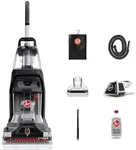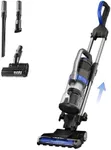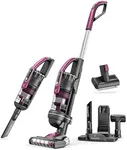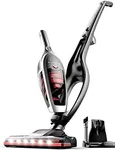Buying Guide for the Best Vacuum For Thick Carpets
Choosing the right vacuum cleaner for thick carpets can make a significant difference in maintaining the cleanliness and longevity of your carpets. Thick carpets require a vacuum that can effectively remove dirt and debris without damaging the fibers. Here are some key specifications to consider when selecting a vacuum cleaner for thick carpets, along with explanations to help you make an informed decision.Suction PowerSuction power refers to the vacuum's ability to lift dirt and debris from the carpet. This is crucial for thick carpets as they tend to trap more dirt deep within the fibers. Suction power is often measured in watts or air watts. For thick carpets, a higher suction power is generally better, as it ensures that the vacuum can reach deep into the carpet pile. However, too much suction can make the vacuum difficult to push. Look for a vacuum with adjustable suction settings so you can find the right balance for your carpet.
Brush RollThe brush roll, or beater bar, is a rotating brush that helps to agitate the carpet fibers and loosen dirt. For thick carpets, a motorized brush roll is essential as it provides the necessary agitation to lift dirt from deep within the pile. Some vacuums offer adjustable brush roll heights, which can be beneficial for different carpet thicknesses. Ensure the brush roll can be turned off or adjusted to prevent damage to delicate carpet fibers.
Height AdjustmentHeight adjustment allows you to raise or lower the vacuum's base to match the height of your carpet. This feature is particularly important for thick carpets, as it ensures the vacuum can move smoothly over the surface without getting stuck or causing damage. Look for vacuums with multiple height settings so you can customize the height to your specific carpet type.
Weight and ManeuverabilityThe weight and maneuverability of a vacuum cleaner are important factors to consider, especially for thick carpets. Heavier vacuums can be difficult to push through dense carpet fibers, leading to fatigue and frustration. Opt for a vacuum that is lightweight and easy to maneuver, with swivel steering or other features that enhance its ability to navigate around furniture and other obstacles.
Filtration SystemA good filtration system is essential for trapping dust, allergens, and other particles that can be released back into the air during vacuuming. High-Efficiency Particulate Air (HEPA) filters are highly effective at capturing small particles and are recommended for households with allergies or asthma. Ensure the vacuum has a sealed system to prevent dust from escaping and check the filter's maintenance requirements.
Bagged vs. BaglessVacuum cleaners come in bagged and bagless models. Bagged vacuums use disposable bags to collect dirt, which can be more hygienic and easier to dispose of, especially for allergy sufferers. Bagless vacuums use a dustbin that needs to be emptied regularly. Consider your preference for convenience and maintenance when choosing between the two. Bagged models may be better for those who prefer less frequent emptying and reduced exposure to dust.
Noise LevelThe noise level of a vacuum cleaner can be an important consideration, especially if you have a household with young children, pets, or noise-sensitive individuals. Noise levels are measured in decibels (dB). Vacuums with lower decibel ratings are quieter and more pleasant to use. Look for vacuums that offer a good balance between performance and noise level to ensure a comfortable cleaning experience.
























